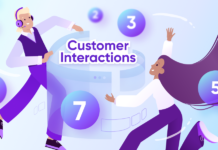The Economics of Your Customer Service Model Require a Rethink
Despite all the digital add-ons that have come along over the past decade, the Service operating model at most companies is still creating two outcomes that⸺when considered together⸺would likely make your Finance executives want to reach for the nearest stress ball and squeeze the guts out of it:
It’s costing your company more than it should, to create a worse customer experience.
This is the inevitability of continuing to operate in a phone-centric Service model. As your customers transform to living in a digital-first world, the way most Service functions are still designed is costing more in operating budget than it should in the short term, and it‘s creating unnecessary customer effort and disloyalty, which costs more lifetime revenue in the long term.
That’s like shooting yourself in the foot. Both feet. (Your CFO just twitched involuntarily…)
With more than 80% of customers now initiating every Service interaction on their own screen, it makes no sense that companies are still permitting/insisting their customers call on the phone to resolve more complex issues. Because when a customer who was just online has to stop that process and start all over again with a separate phone call⸺two bad things happen:
- The phone interaction takes longer than it should, which costs you more
- The whole experience is perceived as much higher effort, with NPS dropping a staggering -58 pts.
Among other things, these negative impacts translate to higher levels of application abandonments and frustrated customers/members leading to a greater likelihood of them considering competitive offerings.
This is why digital-first customer service is becoming the standard for how companies can and should serve their customers. Companies that are operating with Digital Customer Service (DCS) platforms are reporting that the total number of live interactions (the most costly element of any Service operation) is going down over time, and through OnScreen Automation the time spent during each live interaction is also reduced.
And because the entire experience takes place on the customer’s own screen⸺it is a truly effortless 5-star experience. Help, if needed, is available “right there” and the resolution of issues is done in a personalized way. Sometimes the help is virtual or bot-assisted, sometimes the help comes from a live person who I invited onto my screen. In either case, DCS feels different; it feels like an experience that has been curated just for ME (which, of course, is the very definition of customer-centricity!).
If you could improve your customers’ experience, while ALSO reducing the overall cost of your Service operation, doesn’t it make sense to move in that direction? Like, now? Before your CFO sees this!





